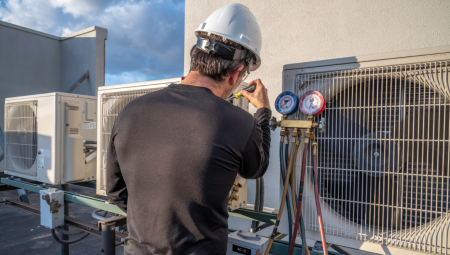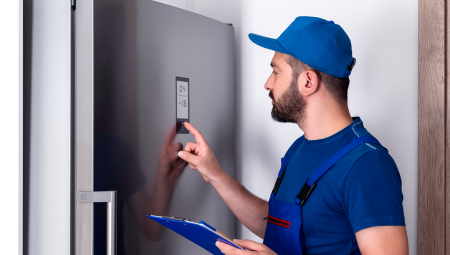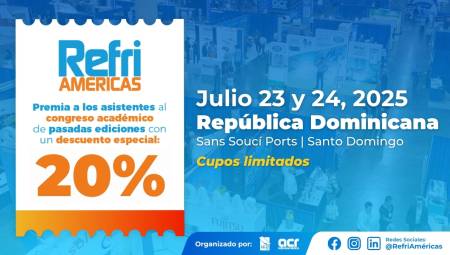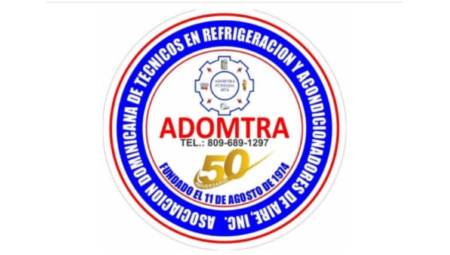 It was initially thought that refrigerated vehicles would only be put at the service of the food sector: meat, fruit and vegetables. Entrepreneurs would never have imagined that these cars would be a vital part of the processes of other markets such as the pharmaceutical or the flower grower.
It was initially thought that refrigerated vehicles would only be put at the service of the food sector: meat, fruit and vegetables. Entrepreneurs would never have imagined that these cars would be a vital part of the processes of other markets such as the pharmaceutical or the flower grower.
by: María Cecilia Hernández
When it comes to flower cooling all experts agree on the same thing and are emphatic in affirming it: each of the stages that make up the process of cooling flowers are vital, none is less important than another and breaking that cold chain is catastrophic for the quality and for the useful life of the flower.Recently passed the successful season of Valentine's Day, so fruitful for all actors in the industry: buyers, growers, transporters, cargo airlines, merchants and especially for countries such as Colombia and Ecuador, main exporters of flowers, and for the United States, the most important buyer of this product.
Precisely we wanted to delve into a topic that is one of the critical stages during the post-harvest stage of the flower: that of the transport of the product until its arrival at the end user. How to maintain the cold chain during the flower transfer stage? What are the mistakes that are made in this part of the process most often and how to correct them?
As explained by Elkin Acevedo, consultant in electricity, electronics and refrigeration for various floricultural companies in Colombia, the procedure prior to the arrival of the flower to the refrigerated vehicle is also vital.
"When the flower leaves the field, it enters a post-harvest room; there it must receive a process of hydration with water and then passes to the cold room, an airtight cabin specially designed to preserve the temperature and humidity of the flowers. These places are equipped with controllers that are programmed depending on the variety of the flower. A harvest of flowers should not pass in that room more than eight days. Once they are requested by the client, they are packed in their respective boxes and a pre-cold process is done through hot air extractors; this stage is executed in special cabins located within the same cold room. Then they are sealed waiting to be taken to transport," Acevedo explains in detail.
Careful packaging
The type of box used to pack the flowers, the number of flowers per box and the accommodation of the product are transcendental decisions for the quality and conservation of the same. The boxes are organized by number of bouquets, and there are different qualities, depending on this quality it is established how many flowers can be arrumar in a single one, because some cartons do not properly absorb the moisture of the flower, or do not preserve the cold properly if it is overloaded. It is necessary to avoid that the product suffers.
According to Acevedo "you have to take special care in storage, protect the air currents and ventilation spaces that must exist between box and box, each box has a gate on both sides this must be open so that the air circulates, you have to verify that the cellars are well designed, let rest those cold rooms so that they are not overused and it is very important to make preventive checks".
Other conditions that account for good storage have to do with the design of the box and the accessories they request, you even have to be attentive to the requirements of the end customer.
"The dimensions of the packaging are relative and often depend on the specific requirements of the customers. In most cases they are cardboard packaging where the flower is stored according to many conditions, among others the order of the flower, the ensunche of the box, sometimes caps are requested for the flowers or meshes to maintain the firmness of the head of the flower in case the species is very delicate, in short, there are many methods and many special conditions that must be taken into account. What is common is that the packaging is made of corrugated cardboard," said Ferdy Alfonso Alvarado – Administrative coordinator and agronomist of Asocolflores.
From the cold room to the vehicle
According to Elkin Acevedo "the flowers must leave the cellar at 2º Celsius temperature. When you get to the truck you can't lose the cold. Upon arrival at the airport, which is where most of the cultivation of flowers in our country is taken to be exported, the temperature of the product cannot be higher than 4º Celsius".
A termoking is a rolling cold room; the oldest ones work with Freón 22 and the new ones with Freón 134 which is the ecological refrigerant.
"A good termoking is a car that has very good equipment, good load capacity, that allows the temperature to drop fast and its walls are good enough to isolate the external temperature. It is, in addition, the one that keeps the temperature in the ideal range between 0.5 degrees and 3 degrees, less or more are unfavorable temperatures. The freezing point should never be touched since when this happens the volume of water in the plant is increased and all its cells carry water and moisten it, the cell bursts and rots. If the temperature is raised, the metabolism of the plant increases and the flower ages. Those are the ideal conditions," says Wilson Mejía, administrative head of Cultivo Sayonara, located in the department of Atioquia in Colombia.
Mejia also states that a final factor that makes a refrigerated vehicle truly good is that of the driver's responsibility. A good termoking has a responsible driver until the time of delivery at the airport.
The expert assures that the mistakes that are most frequently made in the stage of transport of the flower are, for the most part, human and due to ignorance. "We have been presented with various situations, one of the most repetitive is that drivers arrive at the airport and many times can not be attended immediately, so they must wait for a turn to unload; they, in order to save fuel, turn off their vehicles and thereby interrupt the operation of the equipment, suspend the operation of the cold room, temperatures rise and at that moment the cold chain is interrupted. "
This opinion is shared by Ferdy Alfonso Alvarado, from Asocolflores, who comments that critical points and failures in the conservation of the cold chain have been detected in the market and therefore some measures have been implemented that bet on correcting some bad practices. "These are errors that have to do with the logistics and the adequacy of the collection points of refrigerant systems. Usually within the farm or on the farm the issue of the protection of the cold chain is very well solved, but the risk comes when the flower leaves the farm, special care must be taken in the treatment given to the product in post-harvest because it is more vulnerable and prone to suffer diseases. "
By land and by air
When arriving at the airport, it is necessary to avoid at all costs that the product remains more than 10 minutes outside the cold chain, because it must be taken into account that the flower could suffer irreparable consequences, diseases, loss of useful life and quality.
Likewise, the aircraft in charge of bringing the harvest to the consuming country must meet minimum requirements. For Daniel Palacio, cargo manager of Tampa Cargo, an aircraft has to be at least a freighter to be able to comply with the standards required by the Aeronautical Regulation in terms of temperature, which in technical and maintenance terms must meet the same requirements that are required for road loads.
According to Palacio, the mistakes made in refrigerated air transport are almost nil, "it is a procedure on which the necessary controls have been taken to ensure quality, especially since it is already regulated. Perhaps the only drawback that may arise is that you do not have the installed capacity to meet the demand."
The Tampa Cargo official comments that in this segment technology evolves every day, in terms of cold chain, temperature controllers, palletizing, etc. And perhaps for that reason it is easier to deliver a good service and guarantee the rigorous care of the cold chain.
One of those advances, says Ferdy Alfonso Alvarado, is the forced cold that consists of injecting air at low temperature into the boxes where the flowers are packed and with special equipment. This causes the temperature to drop much faster than if the box were left still in the room. This accelerates the cold and the advantage is quality and maintenance of service life."













